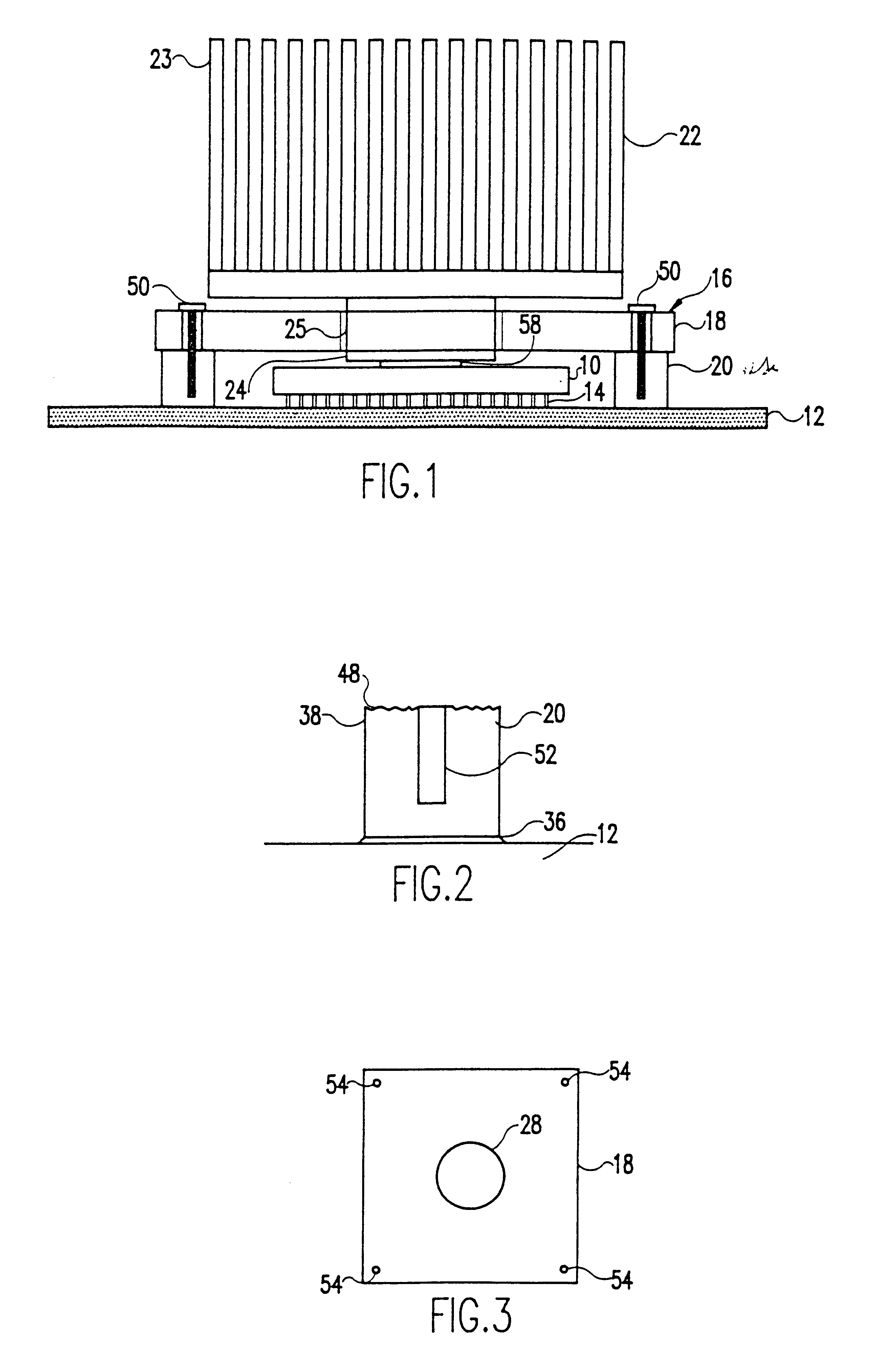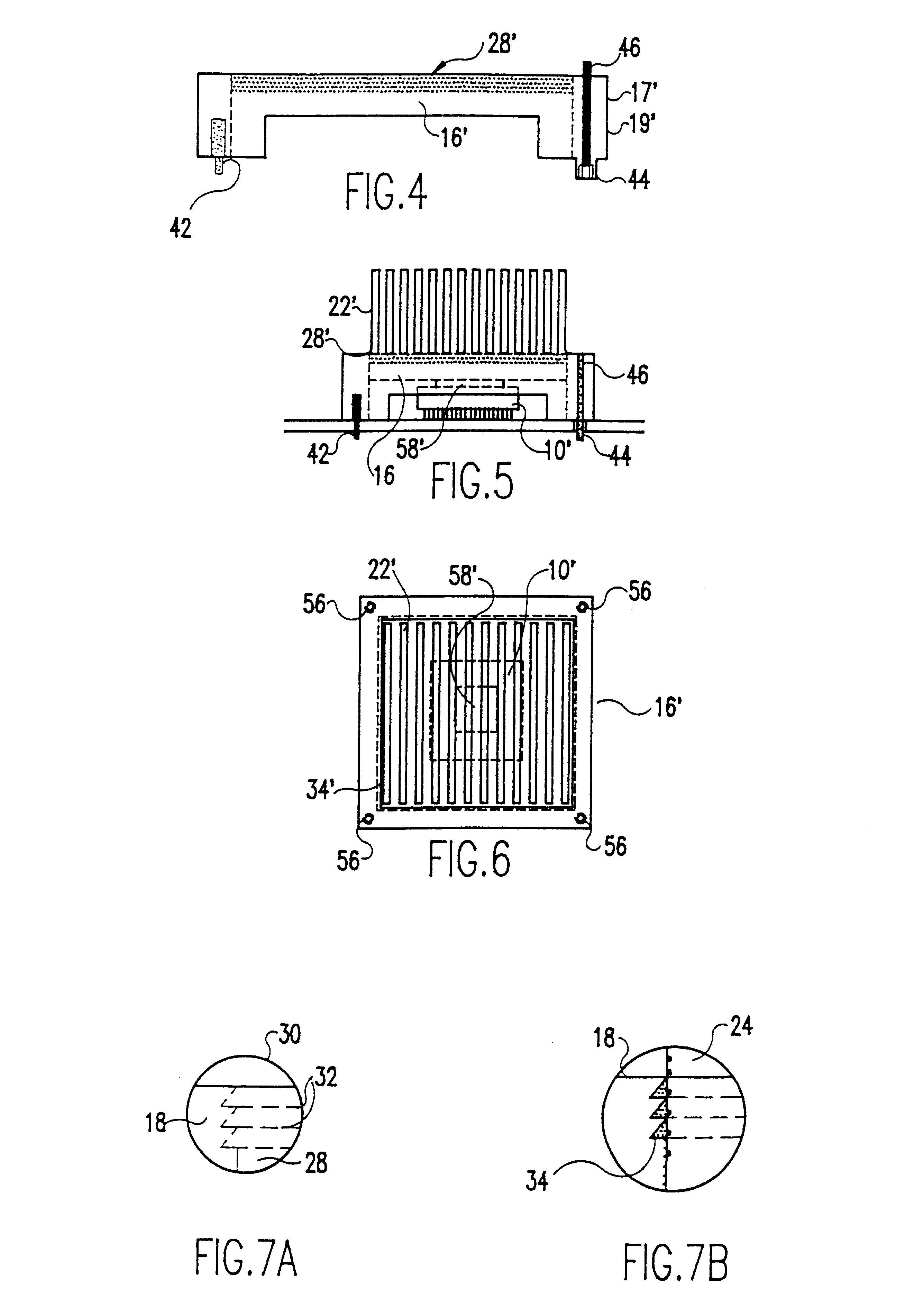Zero force heat sink
a heat sink and zero force technology, applied in the direction of cooling/ventilation/heating modification, semiconductor/solid-state device details, semiconductor devices, etc., can solve the problems of reducing the reliability of the final system design, reducing the range of allowable power dissipation of electronic packages, and adding undesirable costs and complexity
- Summary
- Abstract
- Description
- Claims
- Application Information
AI Technical Summary
Problems solved by technology
Method used
Image
Examples
Embodiment Construction
This invention pertains to decoupling those forces generated by a heat sink mass from an underlying substrate, and particularly a surface mounted substrate. Decoupling a force due to the heat sink mass from the electronic package and its interconnection structure enables and simplifies the use of larger and heavier heat sinks. The use of high mass heat sinks enables higher power dissipations for a given electronic package type. According to this invention, decoupling is accomplished by using a rigid frame to support the weight of the heat sink while maintaining the heat sink in thermal contact with the electronic package. When subjected to vibration and / or shocks during transportation or operation, the frame restrains and limits the displacement of the heat sink relative to the electronic package. Additionally, the frame transfers static and dynamic loading from the heat sink directly to the underlying printed circuit board or card.
FIG. 1 shows a substrate 10 positioned on a support...
PUM
 Login to View More
Login to View More Abstract
Description
Claims
Application Information
 Login to View More
Login to View More - R&D
- Intellectual Property
- Life Sciences
- Materials
- Tech Scout
- Unparalleled Data Quality
- Higher Quality Content
- 60% Fewer Hallucinations
Browse by: Latest US Patents, China's latest patents, Technical Efficacy Thesaurus, Application Domain, Technology Topic, Popular Technical Reports.
© 2025 PatSnap. All rights reserved.Legal|Privacy policy|Modern Slavery Act Transparency Statement|Sitemap|About US| Contact US: help@patsnap.com



